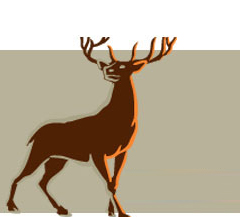The Environment Agency has installed Mitsubishi Jet Towel in its South East Regional Headquarters as part of the Government’s commitment to become carbon neutral by 2020.
Jet Towel is a high tech hand dryer that blasts water droplets away using a high speed air curtain, rather than by the conventional evaporation process. Energy consumption is about one-tenth of one percent that of a traditional hot air dryer, and drying time is 10-12 seconds as opposed to 30-45 seconds.
The Environment Agency has about 400 staff in Guildbourne House, Worthing, its regional HQ and has recently refurbished all 17 toilets to the greenest standards practical. This includes reduced capacity cisterns, solar heated water and the Jet Towels. Facilities Manager Ian Smith says that the project has gone well. “Going green in the washrooms has been popular with the staff; most of their feedback has been very positive. And as toilets are quite a significant element in the cost of running a large office building, we have killed two birds with one stone.”
Jet Towel replaced paper and linen towels, so there are further saving in the cost of servicing these.
“We’re extremely pleased with the outcomes… especially given that we’ve moved away from linen towel and paper towel provision to reduce landfill waste, energy consumption and carbon emissions across the board. In short the Jet Towels have been a great success from a facilities and environmental management perspective.”
Jet Towel was developed in Japan in the early 1990s but has only recently become available in Europe. Mitsubishi’s John Rowley explains: “What we are introducing is actually something like a Mark 7, a fully refined design with all the wrinkles ironed out and a track record that encompasses some of the best buildings in Asia.” Styled with understated elegance, Jet Towel creates an ambience of sophistication and high tech hygiene.
In use just-Washed hands are placed into a slot on the Jet Towel’s upper side and sensors automatically start the 180mph airflow. This can be heated to a pleasant 35degC using a low power storage heating system for instant warmth, although the Environment Agency has opted for the non-heated version. Moisture is blown downwards on both sides of the hands to the drain, and when the dried hands are retracted airflow stops. This completely noncontact operation saves energy as the airflow does not continue after the user has departed and avoids any bacterial transfer.
“Significantly, Jet Towel is whisper quiet, often a must for office installations, where noisy hot air dryer can be heard down the corridor,” observes Rowley.
Costs for running Jet Towel are calculated at 0.02p per dry, against 0.2p for a hot air dryer and 2p for paper towels. Jet Towel uses 4 Joules of energy per dry; a hot air dryer uses 5000 Joules per dry. In a busy office installation Jet Towel may produce 80kg of greenhouse gas carbon dioxide per year; a hot air dryer would produce 800kg of carbon dioxide.
Ian Smith sums up: “Our staff tend to be environmentally aware, so they are delighted with the new bathrooms. There are few things more off-putting than a dirty roller towel or used paper towels spilling out of the bin. Jet Towel gives us a sleek, hygienic, super smart image. Our costs are down and we’re setting the environmental standard for other government departments to follow.”




